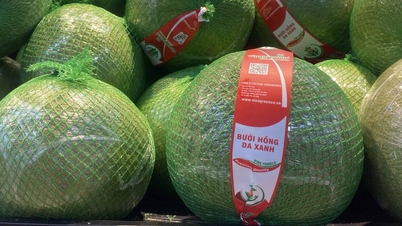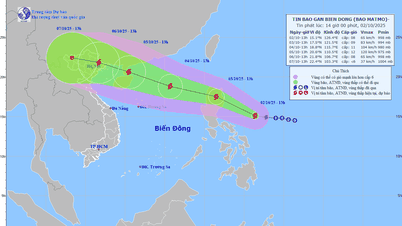Information from the Vietnam Association of Seafood Exporters and Producers (VASEP) shows that in 2024, shrimp exports will bring in 3.9 billion USD, an increase of 14% over the previous year.
Notably, with export turnover reaching 843 million USD, an increase of 39% compared to 2023, China (including Hong Kong) surpassed the US (756 million USD) to become the largest customer importing shrimp from Vietnam.
VASEP said that China's domestic shrimp supply has decreased due to the impact of adverse weather. Ecuador will also reduce exports of this seafood product to China in 2024. Along with that, the country of one billion people has proposed many solutions to promote domestic consumption.
The above factors have supported Vietnam's shrimp export activities to the Chinese market.
In the structure of Vietnamese shrimp products exported to the Chinese market, other types of shrimp (including lobster) account for the highest proportion of 51.7% because people in this country spend money to buy lobsters from Vietnam in 2024. Next is white-leg shrimp accounting for 36.1% and black tiger shrimp accounting for 12.2% of the total export value of the entire Vietnamese shrimp industry.
However, exports of black tiger shrimp to China decreased more sharply than whiteleg shrimp. Processed black tiger shrimp and whiteleg shrimp products decreased more sharply than fresh/live/frozen products. In particular, processed black tiger shrimp decreased by 44%.
On the other hand, other types of shrimp exports recorded a sharp increase of 174%. Of which, processed products increased by 199%, live/fresh/frozen shrimp increased by 185%.
VASEP said that in the other shrimp product group, mainly lobster products. In 2024, exports of this “rich seafood” to China will increase sharply. Currently, China is the largest import market for Vietnamese lobsters, accounting for 98-99%.
In China, in 2024, rock lobster and other marine shrimp were the second most imported products into China, recording a 39% increase compared to 2023. Warmwater shrimp products saw a decrease in import value.
Also in the past year, China reduced purchases from other sources and only increased imports of this aquatic product from Vietnam.
In the first half of January 2025, our country's shrimp exports to China continued to increase sharply by 191% over the same period last year, reaching more than 51 million USD.
VASEP assessed that the reason for the decrease in white-leg shrimp imports in China is not due to oversupply but due to a significant decline in the consumption capacity of the middle class.
As economic growth slows and incomes fall, and living costs rise, consumers are increasingly focused on cost-effectiveness, and aquatic proteins are gradually shifting from “preferred” to “optional”. Whiteleg shrimp is a price-sensitive product, affected by the decline in demand.
In particular, in the middle and low-end markets, the situation of whiteleg shrimp is in contrast to high-end seafood products (lobster, salmon, king crab...) in the high-end market.
Meanwhile, the consumption level of the rich is relatively stable. Therefore, businesses should increase lobster exports, at the same time promote and have attractive solutions to stimulate the consumption demand of traditional products such as whiteleg shrimp and tiger prawn in the Chinese market.
Vietnamnet.vn
Source: https://vietnamnet.vn/trung-quoc-vung-tien-gom-tom-hum-viet-nam-2371650.html


![[Photo] Binh Trieu 1 Bridge has been completed, raised by 1.1m, and will open to traffic at the end of November.](https://vphoto.vietnam.vn/thumb/1200x675/vietnam/resource/IMAGE/2025/10/2/a6549e2a3b5848a1ba76a1ded6141fae)









![[Photo] Hanoi morning of October 1: Prolonged flooding, people wade to work](https://vphoto.vietnam.vn/thumb/402x226/vietnam/resource/IMAGE/2025/10/1/189be28938e3493fa26b2938efa2059e)


























































































Comment (0)